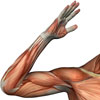Diabetes drug shows promise for muscle disease
A drug developed by Baker IDI scientists could help treat Duchenne Muscular Dystrophy (DMD), a severe and progressive muscle wasting disease that affects young boys, according to a study published in Nature.
An international team led by University of Melbourne researchers has found that by increasing levels of ‘heat shock protein 72’ (HSP72) in the muscles of animal models of DMD, muscle strength improved, the disease progression slowed and lifespan increased.
Approximately one in every 3,500 boys worldwide is afflicted with DMD. There is no cure for the disease which causes muscle fragility, spinal curvature and premature death.
The research led by Professor Gordon Lynch, Head of the Department of Physiology at the University of Melbourne and conducted by Dr Stefan Gehrig, investigated several scientific approaches of increasing the levels of the protein. The study was performed in collaboration with Professor Mark Febbraio and his team at Baker IDI Heart and Diabetes Institute.
One approach revealed that administering the drug BGP-15 (which increases HSP72) improved overall muscle function in limbs and the diaphragm, a muscle critical for breathing. In addition, the lifespan increased by 20 per cent.
The researchers also discovered that increasing HSP72 in muscles improved the function of a pump responsible for controlling calcium levels confirming it as a target for future therapeutic drugs for the disease.
Professor Mark Febbraio said his team of scientists had been working on HSP72 for many years.
“This drug is already being used in human clinical trials for people with type 2 diabetes so the hope is that we can quickly get this into clinical trials for people with DMD very quickly,” Professor Febbraio said.
More Information
 | For more information on neurological disorders that affect movement, and their treatments, see Neurological Rehabilitation and Movement Disorders. |
Dates
Tags
Created by:

 Login
Login














